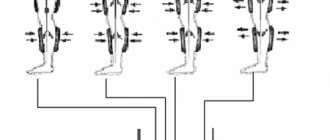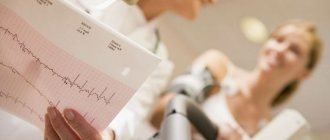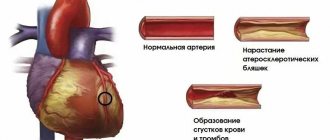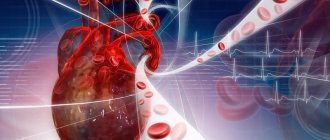Story
The history of nitroglycerin begins with the Italian chemist Ascaño Sobrero. He first synthesized this substance in 1846. It was originally given the name pyroglycerin. Already Sobrero discovered its great instability - nitroglycerin could explode even from weak shocks or impacts.
The explosive power of nitroglycerin theoretically made it a promising reagent in the mining and construction industries - it was much more effective than the types of explosives that existed at that time. However, the mentioned instability created too great a threat during its storage and transportation - so nitroglycerin was shelved.
Things moved a little forward with the appearance of Alfred Nobel and his family - father and sons established industrial production of this substance in 1862, despite all the dangers associated with it. However, what had to happen sooner or later happened - there was an explosion at the factory, and Nobel’s younger brother died. After suffering grief, his father retired, but Alfred managed to continue production. To increase safety, he mixed nitroglycerin with methanol - the mixture was more stable, but very fire hazardous. It still wasn't a final decision.
It was dynamite - nitroglycerin absorbed by kieselguhr (sedimentary rock). The explosiveness of the substance has decreased by several orders of magnitude. Later, the mixture was improved, kieselguhr was replaced with more effective stabilizers, but the essence remained the same - the liquid was absorbed and stopped exploding at the slightest shock.
A pronounced and rapid anti-ischemic effect, an equally pronounced and rapid effect on hemodynamics, “controllability” and safety - all these characteristics of nitroglycerin (NTG) have long ensured its role as one of the main drugs used to treat exacerbations of coronary heart disease (CHD; table. 1). The purpose of this report is to analyze current recommendations for the use of intravenous NTG in the treatment of patients with acute coronary syndromes (ACS).
Mechanism of action: antianginal, hemodynamic and other effects of NTG
The mechanism of action of NTG and other nitrates is closely related to one of the main vasoactive substances in the body - nitric oxide. Essentially, all nitrates should be considered as exogenous sources. Nitric oxide, by activating the enzyme guanylate cyclase, helps to increase the content of cyclic guanidine monophosphate (cGMP) in cells, a universal intracellular messenger that causes relaxation of smooth muscle structures.
The antianginal effect of NTG is based on multiple physiological reactions associated with both its direct effect on coronary blood flow and changes in a number of hemodynamic characteristics. By causing dilatation of both normal and atherosclerotic arteries, increasing blood flow in collaterals, NTG improves coronary circulation and promotes blood redistribution in favor of the ischemic zone. IGT causes both predominantly venous and arterial dilatation. By dilating the peripheral veins, NTG reduces the level of preload, which, in turn, reduces the tension of the left ventricle and its oxygen demand. By dilating peripheral arteries, NTG reduces afterload.
The indicated vascular effects of NTG (especially when administered intravenously) should be complemented by a beneficial effect on the parameters of the coagulation system, aggregation of blood platelets, and rheological properties of blood.
NTG in the treatment of ACS from the perspective of evidence-based medicine
Meta-analysis by S. Yusuf et al. [10] 10 small randomized studies performed in the period preceding the widespread use of thrombolytic therapy in the treatment of acute myocardial infarction (MI), and including a total of about 2000 patients, showed a fairly pronounced (35%) reduction in mortality in patients who received early intravenous administration NTG. The most serious (and large) controlled studies of nitrates in acute MI were performed in the early 90s. last century – GISSI-3 [2] and ISIS-4 [3]. They already provided for the use of thrombolytic agents. In fact, both studies, covering about 80 thousand patients, compared the effectiveness of 2 strategies - routine (“all in the absence of contraindications”) and selective (“according to indications”) use of nitrates in the treatment of acute MI. In this regard, the “traditional interpretation” of their result, as evidence that nitrates have no effect on the survival of patients with MI, does not seem entirely correct. It is probably more acceptable to conclude that there is no advantage to routine use of nitrates over selective use, since a significant proportion of patients randomized to the “control group” naturally received nitrates when necessary. There have been no significant studies of nitrates in unstable angina and non-ST elevation MI (non-ST elevation ACS). Thus, the use of NTG and other nitrates in patients with ACS, as modern guidelines unanimously note, is based mainly on “pathophysiological premises and clinical experience” [4].
Indications for starting intravenous administration of NTG in patients with ACS
Intravenous infusion of NTG in ACS with ST segment elevation
Indications for starting intravenous infusion of NTG in patients with MI are presented in Table 2 and correspond to the main provisions of existing practical guidelines [5]. Situations in which NTG infusion within the first 24-48 hours is effective include cases of anterior major MI; MI complicated by heart failure and recurrent ischemia; as well as MI occurring against the background of high blood pressure (BP). Infusion of NTG can be continued for more than 48 hours if stagnation in the pulmonary circulation and early post-infarction angina persists. There are no concerns limiting the routine use of NTG in all cases of MI in the absence of contraindications, as well as (more than 48 hours) in cases of extensive anterior MI complicated by heart failure.
Intravenous infusion of NTG for ACS without ST segment elevation
The need for intravenous administration of NTG in cases of ACS without ST elevation (Table 3) is largely determined by the presence of clear indications. As a rule, it is advisable in patients with high coronary risk - with recurrent angina attacks, despite adequate treatment, as well as in cases of congestive heart failure.
Contraindications to starting intravenous infusion of NTG
Conditions in which the use of intravenous NTG may be associated with a potential risk (Table 2) include arterial hypotension with a systolic blood pressure level below 90 mm Hg. Art., bradycardia (heart rate less than 50 per minute) or, on the contrary, severe tachycardia. Contraindications should also include cases of right ventricular MI that occurs with significant hemodynamic disturbances. Nitrates within the next 24 hours are unsafe for patients who have taken sildenafil (Viagra). The last warning is due to the mechanism of action of sildenafil, which blocks phosphodiesterase and thereby promotes excessive accumulation of cGMP in cells. This can lead to the development of uncontrolled arterial hypotension with all the ensuing consequences.
Dosing of intravenous NTG, development of tolerance
If necessary, the administration of NTG can be started with an intravenous bolus of 12.5-25 mcg. The initial infusion rate is usually 10 mcg/min. At intervals of 3-5 minutes, monitoring the patient’s condition, the infusion rate is increased by 10 mcg/min until individual criteria for optimal dosing are achieved. These include: elimination of ischemic symptoms, reduction of systolic blood pressure by 10% (10-15 mm Hg) in normotensive patients and by 25-30% in patients with high blood pressure. The criterion for optimal dosing of NTG in congestive heart failure is, as a rule, the blood pressure level. There is no information on the maximum permissible doses of NTG, although in practice doses exceeding 200 mcg/min are usually not used. If the symptoms of ischemia are not eliminated by increasing the rate of NTG administration, then the criterion for stopping further increase in the dose is the blood pressure level.
The development of tolerance to IGT becomes clinically significant one day after the start of continuous infusion. In an ACS situation, it usually does not pose a big problem and can be overcome by escalating the dose of the administered drug. If longer-term use of nitrates is necessary, conditions should be created for their intermittent use, using alternative treatment options.
Side effects of intravenous NTG and discontinuation of its infusion
The most common side effects of intravenous infusion of NTG are hypotension and headache. Methemoglobinemia, as a rule, has only theoretical significance: it has been shown that even long-term (2-4 weeks) administration of NTG at 300-400 mcg/h does not lead to an increase in the content of methemoglobin in the blood [6]. The most serious side effect of IGT is considered to be arterial hypotension. A pronounced decrease in blood pressure upon administration of even minimal doses of NTG may be one of the clinical manifestations of right ventricular myocardial infarction.
If necessary, an attempt is made to gradually reduce the infusion rate (especially in patients receiving large doses of the drug) with subsequent cessation of the administration of NTG. Rapid withdrawal of IGT in some cases can provoke repeated ischemic episodes.
IGT and right ventricular myocardial infarction
Typical disorders that develop with significant lesions of the right ventricular myocardium are characterized by dilatation of its cavity, a decrease in right ventricular output, a decrease in left ventricular preload, left ventricular filling pressure, cardiac output, circulating blood volume and systemic blood pressure. Due to the above circumstances, a further decrease in preload with the introduction of NTG, as well as diuretics, can contribute to the aggravation of hemodynamic disorders, frequent arterial hypotension, and even lead to the development of shock. The basis for the treatment of shock that complicates the course of right ventricular myocardial infarction is volume-replenishment therapy and the use of dobutamine. With combined dysfunction of the left and right ventricles, NTG infusion may be added to treatment with dobutamine; in this case, manipulations of administered drugs should be carried out under the control of central hemodynamic parameters using a “floating” Swan-Ganz catheter. The maximum pumping function of the heart is usually observed when the pressure increases (“jamming”) to 20 mm Hg. Art.
NTG in the treatment of patients with cardiogenic shock
Dopamine and/or dobutamine, drugs that stimulate the contractile function of the heart and have a pressor effect, form the basis of pharmacotherapy for cardiogenic shock. Carefully monitored infusion of NTG may be required if there is a need to further reduce left ventricular filling pressure, increase cardiac output, or when pulmonary congestion is associated with the use of pressor agents.
Conclusion
Summarizing all of the above, we can conclude that in the absence of clearly defined contraindications and correct use, including compliance with all necessary precautions, intravenous NTG can be actively used in the treatment of various forms of ACS, incl. THEM.
An important advantage of NTG for intravenous administration over other nitrates is its greater safety, determined by the pharmacokinetics of this drug (rapid onset of action, short half-life), which makes it possible to very quickly stop the effect of NTG if adverse events develop. In addition, this provides the ability to regulate the strength of the therapeutic effect of NTG. Due to its good “controllability,” intravenous NTG in the early stages of acute coronary disorders should be given preference over its other formulations (sublingual, tablets, aerosol).
Tolerance that develops with prolonged NTG infusion is usually easily overcome by increasing the dosage or rate of administration.
There are a number of imported intravenous nitroglycerin preparations on the Russian drug market, but their widespread clinical use is limited by the price factor. The situation changed for the better after the domestic drug “Nitroglycerin solution 0.1% for injection No. 10” entered the market. At the beginning of this year, the drug underwent clinical testing in a number of Moscow clinics and, according to experts, turned out to be effective in patients with acute coronary pathology and chronic heart failure. Domestic intravenous nitroglycerin was not inferior to foreign analogues (Izoket, Nitromac, etc.) and was characterized by high safety.
Physical and chemical properties
Nitroglycerin is a nitroester of nitric acid and glycerin. Under normal conditions it is a yellowish, viscous oily liquid. Nitroglycerin is insoluble in water. Nobel took advantage of this property: in order to prepare nitroglycerin for use after transportation and free it from methanol, he washed the mixture with water - methyl alcohol dissolved in it and left, but the nitroglycerin remained. The same property is used in the production of nitroglycerin: the synthesis product is washed with water to remove any remaining reagents.
Nitroglycerin hydrolyzes (to form glycerol and nitric acid) when heated. Alkaline hydrolysis occurs without heating.
Stabilization of nitroglycerin. Dynamite
Nobel's first experiment in stabilizing nitroglycerin was dynamite - kieselguhr completely absorbed the liquid, and the mixture was safe (until, of course, it was activated in a demolition bomb). The reason why diatomaceous earth is used is the capillary effect. The presence of microtubules in this rock determines the effective absorption of liquid (nitroglycerin) and its retention there for a long time.
Symptoms of angina
The main symptom of the onset of an attack is pain in the heart area. It is characterized by:
- pressing, squeezing character;
- course in attacks, with intensification and weakening;
- localization in the upper or middle part of the chest with a return to the left arm;
- gradual increase;
- abrupt cessation after eliminating the cause or taking nitroglycerin.
- feeling of fear and anxiety (popularly “angina pectoris”)
Sometimes patients confuse the symptoms of angina with osteochondrosis of the cervicothoracic region, arthrosis of the shoulder joint, and lung disease. In people with a high threshold for pain sensitivity, angina generally manifests itself as mild discomfort in the chest. Instead of pain, the patient may complain of shortness of breath, or suffocation, heartburn, or attacks of weakness in the left arm.
Obtained in the laboratory
The reaction for producing nitroglycerin in the laboratory is now still the same as that used by Sobrero - esterification in the presence of sulfuric acid. First, a mixture of nitric and sulfuric acids is taken. Acids need to be concentrated, with a small amount of water. Next, glycerin is gradually added to the mixture in small portions with constant stirring. The temperature must be kept low, since in a hot solution, instead of esterification (ester formation), oxidation of glycerol with nitric acid will occur.
But since the reaction releases a large amount of heat, the mixture must be constantly cooled (usually this is done with ice). As a rule, it stays around 0 ° C; exceeding 25 ° C can lead to an explosion. Temperature is monitored continuously using a thermometer.
Nitroglycerin is heavier than water, but lighter than mineral (nitric and sulfuric) acids. Therefore, in the reaction mixture the product will lie in a separate layer on the surface. After the reaction is completed, the vessel must be cooled further, wait until the maximum amount of nitroglycerin has accumulated in the top layer, and then pour it into another container with cold water. Then comes intensive washing in large volumes of water. This is necessary in order to clean nitroglycerin as best as possible from all impurities. This is important, because when combined with the remains of unreacted acids, the explosive hazard of the substance increases several times.
Angina pectoris: what not to do
- endure pain, refuse to take medications;
- postpone visiting a doctor if attacks occur constantly;
- exceed the maximum dose of drugs;
- continue to abuse alcohol, overeat fatty, fried foods.
ATTENTION! If you are concerned about chest pain, consult a cardiologist! You should not take medications without consulting a specialist.
The Medicenter clinic employs cardiologists with extensive experience, and also has modern diagnostic equipment, thanks to which the doctor can determine the most appropriate treatment regimen and prevention of angina pectoris.
Industrial production
In industry, the process of producing nitroglycerin has long been automated. The system that is currently used, in its main aspects, was invented back in 1935 by Biazzi (and that’s what it’s called - the Biazzi installation). The main technical solutions in it are separators. The primary mixture of unwashed nitroglycerin is first separated into two phases in the separator under the influence of centrifugal forces - the one with nitroglycerin is taken for further washing, and the acids remain in the separator.
The remaining stages of production coincide with the standard ones. That is, mixing glycerin and a nitrating mixture in a reactor (produced using special pumps, mixed with a turbine mixer, more powerful cooling using freon), several washing stages (with water and slightly alkaline water), before each of which there is a stage with a separator.
The Biazzi installation is quite safe and has a fairly high productivity compared to other technologies (however, a large amount of product is usually lost during washing).
Home conditions
Unfortunately, although, rather, fortunately, the synthesis of nitroglycerin at home is associated with too many difficulties, overcoming which is generally not worth the result.
The only possible method of synthesis at home is to obtain nitroglycerin from glycerin (as in the laboratory method). And here the main problem is sulfuric and nitric acids. The sale of these reagents is permitted only to certain legal entities and is strictly controlled by the state.
The obvious solution is to synthesize them yourself. Jules Verne in his novel “The Mysterious Island,” talking about the episode of the production of nitroglycerin by the main characters, omitted the final moment of the process, but described in great detail the process of obtaining sulfuric and nitric acids.
Those who are really interested can look into the book (the first part, chapter seventeen), however, there is a catch here - the uninhabited island was literally replete with the necessary reagents, so the heroes had at their disposal sulfur pyrites, algae, a lot of coal (for burning), potassium nitrate, and so on. Will the average addicted person have this? Hardly. Therefore, homemade nitroglycerin in the vast majority of cases remains just a dream.
Causes of angina pectoris
Oxygenated blood enters the heart muscle through the coronary arteries. They can become clogged, causing partial obstruction. In this case, the heart does not receive sufficient blood flow, and an attack of angina develops.
Angina pectoris is more common in people over 50 years of age because the coronary arteries lose elasticity. The more they become denser, the higher the likelihood of developing obstruction. Compaction may occur faster due to:
- stress and excessive exercise
- decisions to suddenly go in for sports without appropriate preparation (cardio loads);
- smoking, excessive alcohol consumption;
- eating foods that cause high cholesterol;
- predisposition – genetic, age-related;
- physiological reasons - cholesterol above 3.6-5.2 mmol/l, high blood pressure, obesity, diabetes.










